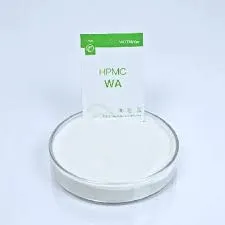
Sep . 11, 2024 23:25 Back to list
High-Performance Mortar Solutions | HPMC for Mortar Applications
HPMC for Mortar Enhancing Performance and Workability
Hydroxypropyl Methylcellulose (HPMC) is a widely used cellulose ether that has gained popularity in construction materials, particularly in mortars. As a key additive, HPMC improves various properties of mortar, making it indispensable in the modern construction industry. This article explores the significance of HPMC in mortar formulations, focusing on its benefits and applications.
What is HPMC?
HPMC is a water-soluble polymer derived from cellulose, a natural polymer. Its structure consists of hydroxypropyl and methyl groups that enhance its solubility and functionality. HPMC is not only safe and non-toxic but also environmentally friendly, making it a preferred choice for both manufacturers and end-users. It is available in various viscosity grades, allowing for customization based on specific requirements.
Benefits of HPMC in Mortar
1. Improved Workability One of the primary advantages of HPMC in mortar is its ability to enhance workability. When added to the mortar mix, HPMC increases the viscosity of the water phase, resulting in a smoother and more cohesive mixture. This improved consistency allows for easier application, reduced effort during mixing, and better surface finishing. Laborers can work more efficiently, which is crucial in large-scale construction projects.
2. Water Retention HPMC significantly improves the water retention capacity of mortars. This feature is essential for preventing rapid drying, which can lead to cracking and reduced bonding strength. By retaining moisture, HPMC ensures that the cement hydrates properly over an extended period, resulting in stronger and more durable mortar. This property is particularly beneficial in hot or dry environmental conditions where moisture loss is a concern.
hpmc for mortar

3. Enhanced Adhesion and Flexibility The incorporation of HPMC in mortar formulations enhances adhesion to various substrates, including bricks, concrete, and tiles. This property is critical for ensuring long-lasting bonds in various applications. Additionally, HPMC provides flexibility to the mortar, allowing it to accommodate slight movements in the structure without compromising integrity. This capability is vital in earthquake-prone regions where buildings are subjected to dynamic forces.
4. Reduced Shrinkage Mortar with HPMC exhibits reduced shrinkage compared to standard formulations. This reduction minimizes the risk of cracks, which can affect not only the appearance but also the structural performance of the building. By controlling shrinkage, HPMC contributes to the longevity and durability of mortar applications.
Applications of HPMC in Mortar
HPMC is versatile and finds applications across various mortar formulations, including tile adhesives, plaster, and repair mortars. Its ability to enhance the properties of these materials makes it a preferred additive among manufacturers. Additionally, HPMC can be utilized in specialty mortars tailored for specific uses, such as self-leveling compounds and lightweight mortars.
Conclusion
In conclusion, HPMC is an essential additive that significantly enhances the performance and workability of mortar. Its benefits, including improved workability, water retention, adhesion, flexibility, and reduced shrinkage, make it a valuable component in modern construction materials. As the construction industry continues to evolve, HPMC will undoubtedly play a crucial role in enhancing the quality and durability of mortars, paving the way for safer and more resilient structures.
-
Unlocking the Benefits of HPMC Products: A Gateway to Versatile Applications
NewsAug.07,2025
-
Unleashing the Potential of HPMC Ashland: A Comprehensive Look
NewsAug.07,2025
-
Tile Bonding Cellulose: The Key to Superior Adhesion and Durability
NewsAug.07,2025
-
Hydroxypropyl Methylcellulose Powder: The Versatile Component in Modern Pharmaceuticals
NewsAug.07,2025
-
Hydroxyethyl Cellulose: The Versatile Solution for Various Industries
NewsAug.07,2025
-
Hydroxyethyl Cellulose (HEC): The Versatile Polymer for Various Applications
NewsAug.07,2025







